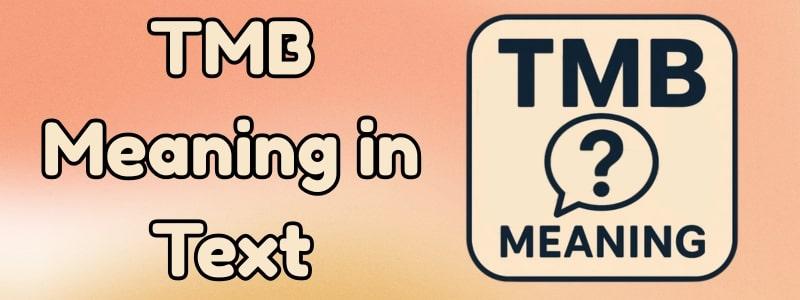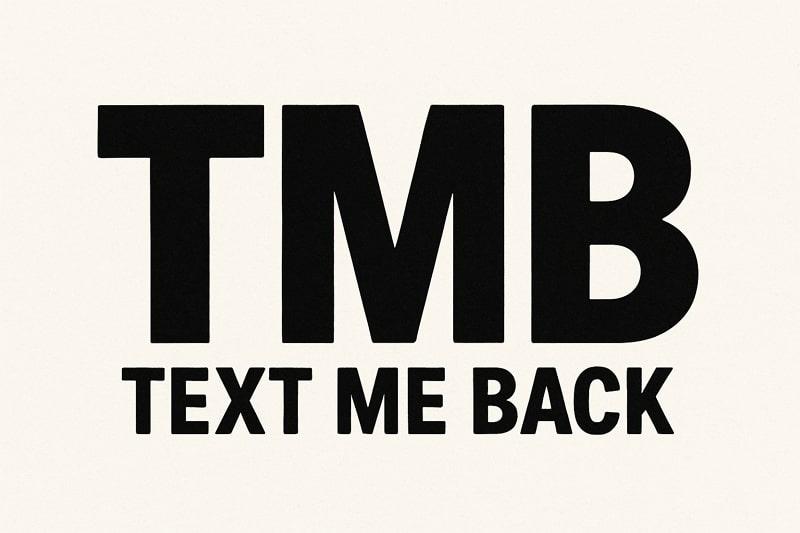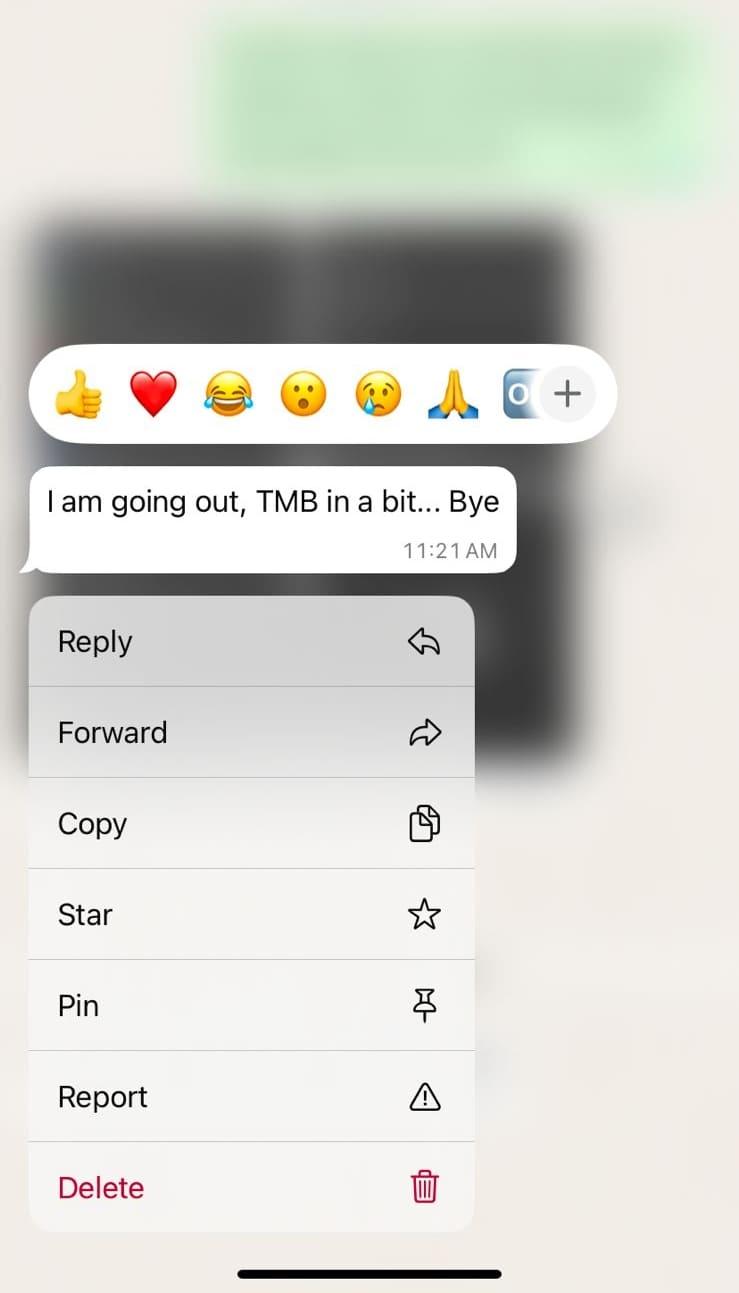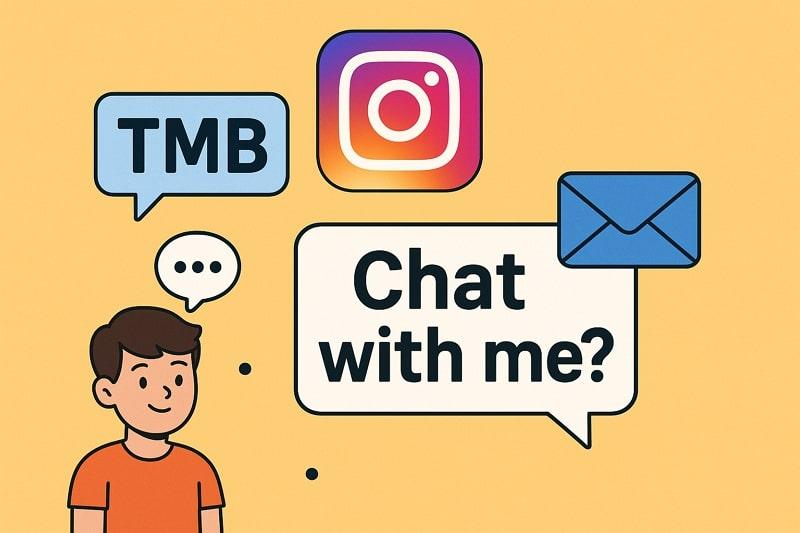Teens use short words and special symbols in their online messages to make chatting more straightforward. Such short forms typically don't hold much meaning, as they are a common way for teens to express themselves online. Yet, they can also involve some mature content that many parents may not be familiar with. This lack of understanding can create a gap between parents and children, putting their online presence at risk.
Among the famous abbreviations, TMB is a commonly used word among teens that usually confuses parents. Thus, this guide will explain TMB meaning and origin in digital communication platforms. You will learn about its various use cases, along with examples, to better understand these abbreviations. Furthermore, a parental control application will be shared with you to help you monitor if your kids are using inappropriate terms.

Table of Content
Part 1. TMB Meaning in Text: What Does TMB Stand for?
Since it is widely used by kids, parents should know about it to ensure the kids are using it properly. Thus, the following section explains TMB meaning in text, including its origin and the reasons to use it:
TMB = "Text Me Back" Basic Definition
Although it could have multiple uses, a commonly used meaning is Text Me Back, which is a simple way of asking someone to reply to a message. It is used by teenagers with this sense in conversations because it saves time while typing. Instead of writing a full sentence, they just use these 3 letters to get their point across.

The Origin of TMB in Digital Communication
You can learn what TMB means in the text by knowing that it became popular in the early days of mobile texting. These words were used to save characters while messaging when people used phones with small buttons and limited space. Afterward, this abbreviation became part of everyday digital language, especially among teens who use it in chats and comments.
Why Teens Use Text Abbreviations Like TMB
- Saves Time: Teenagers chat quickly with many people, so using short forms helps them reply quickly without writing full sentences. Typing fewer letters allows them to keep conversations moving, especially during busy chats.
- Stay Trendy: Many teens use abbreviations like TMB because their friends do, and it helps them feel like part of their social group. Besides, following online trends makes them feel connected and updated with the way others communicate.
- Fit Messages Easily: Some social media applications limit how many words you can use in one message or post. Therefore, such slang helps teens say what they want without running out of space or making the message too long.
- Casual Style: These short forms are also a relaxed and informal way of speaking that makes it comfortable among close friends. Thus, teenagers prefer this casual tone instead of using formal sentences when talking online.
- Private Code: Many times, teens use such terms so that only other kids their age would understand. This helps them keep conversations more private, especially in group chats where adults might also be present.
Part 2. How Teens Use TMB: Real Examples and Context
Moving forward, parents can understand the TMB text meaning by seeing real examples where kids use this word. Hence, we have provided these real examples across different platforms to learn the term's usage and how kids use it:
- Response Levels: Teens use such words with phrases like “TMB ASAP” to ask for a quick reply during urgent situations. They may also write “TMB Later” after casual talks to say that the reply can come anytime without stress.
- Conversation Breaks: You can say, "I'm going out, TMB in a bit," to pause chats without ending the conversation. This shows they plan to return and continue talking after their short break or daily tasks.

- Open Group Replies: People can also use this term to start conversations in group chats with phrases like “Hey, anyone free? TMB here.” Similarly, teens use this to start group plans or get quick responses without picking one person.
- Tone and Emotion: A teen might post “Miss this so much… TMB” to invite a friend to talk about shared memories. This version carries more emotion and usually expects a caring or thoughtful reply.
- Event Planning: Its usage in sentences like, “Game night again tonight, TMB if you’re in” to confirm plans with friends. In this way, they use it to keep the chat short while still making sure everyone is included in the conversation.
Platform Differences
1. TMB Meaning on Instagram
The meaning of TMB may also change depending on what platform it is used and its audience. That’s why we have shared its different meanings across different platforms in the given sections:
You will mostly see kids using this term in the comments of a post asking the other person for a private reply. Here, TMB meaning Instagram changes to casual chat invitations and doesn’t show any urgency.

2. TMB Meaning on Snapchat
Teens use this term after sending a snap to a close friend to ask them to reply to them soon. In this way, TMB meaning Snapchat feels more personal, as Snapchat messages are quick and often disappear after being read.
3. TMB Meaning on TikTok
You can understand what does TMB means on TikTok by comparing its meaning to Instagram, as it is used in comments and captions when users want private replies. Although TikTok is primarily used for videos, teens still use the platform to ask friends to chat outside of public spaces.
4. TMB Meaning in Text Messages
TMB text meaning refers to someone asking for a reply in regular text conversations to continue the chat. This use is direct and casual, commonly found in simple text messages and on famous messaging platforms.
Part 3. Other TMB Meanings Parents Should Know
Apart from the above meanings, the term also has other interpretations that stem from how people abbreviate it. Some of these abbreviations and the general meaning of TMB across platforms are given below:
1. "Tag Me Back" on Social Media
It can stand for “Tag Me Back,” which means the person wants to be tagged in return on this platform. Teens often tag each other in funny posts or photos, and replying with a tag shows friendship.
2. "Take Me Back" for Nostalgia
Many times, teenagers use TMB, meaning “Take Me Back,” especially when they post old pictures or talk about memories. This is common on apps where users share memorable moments from school trips or holidays.

3. "Tweet Me Back" on Twitter
Although not as common as texting or Instagram, TMB on Twitter can also mean “Tweet Me Back,” asking someone to reply publicly. This TMB meaning is used during conversations on Twitter threads or after tagging someone in a post or a comment.
5 Helpful Tips for Understanding Context
- Check the Platform: Different platforms may alter the meaning of TMB depending on how they're used and by whom in a conversation. Therefore, always think about which app your child is using before assuming what a word means.
- Read the Whole Message: Instead of focusing only on the TMB meaning, try to look at the full sentence or conversation around it. If they are asking for a reply, it likely means “Text Me Back,” but in photo captions, it could mean something else.
- Notice the Mood: Many times, the way your child writes or the kind of photo they post gives a hint about their meaning. A happy tone might mean "Tag me back," while a serious or emotional post might mean "Take me back."
- Ask Kindly: Calmly asking your child is always the best option when you’re not sure about the word’s meaning. Children are more likely to explain their words and feelings when they feel you are open and not judging them.
- Learn Together: Learning new digital terms with your child makes things easier and shows that you care about their online life. So, ask them to teach you the slang they use and share what you learn as well.
Part 4. How to Know If Your Teen is Using Inappropriate Slang Words?
Apart from the above tips, another way to ensure your kids aren't using the inappropriate meaning of TMB is to use parental monitoring apps. FamiSafe comes to mind in this regard, as it allows monitoring of kids' calls and messages on their devices. The app instantly provides notifications to parents when it detects any inappropriate words in the kids' texts, allowing them to take action.

Once you detect they are in contact with someone unknown, you can easily add them to the block list to avoid further contact. Similarly, the app allows setting up downtime, after which the phone becomes inaccessible. Children can access it only after their parents permit by entering a safe code or a secret PIN. The app also features tools to capture kids' screens and provide daily usage details.
Conclusion
To conclude, parents are usually curious about the TMB meaning because they want to know if it is a safe term to use. While it can have multiple meanings, "Text Me Back" is the most common one used across different social media platforms.
Similarly, its usage across different contexts can change its meaning to represent urgency or casualty. Parents can understand this slang better by using applications like FamiSafe.



